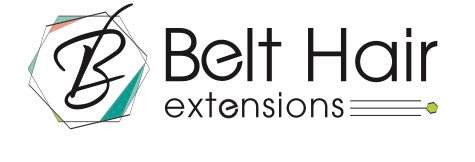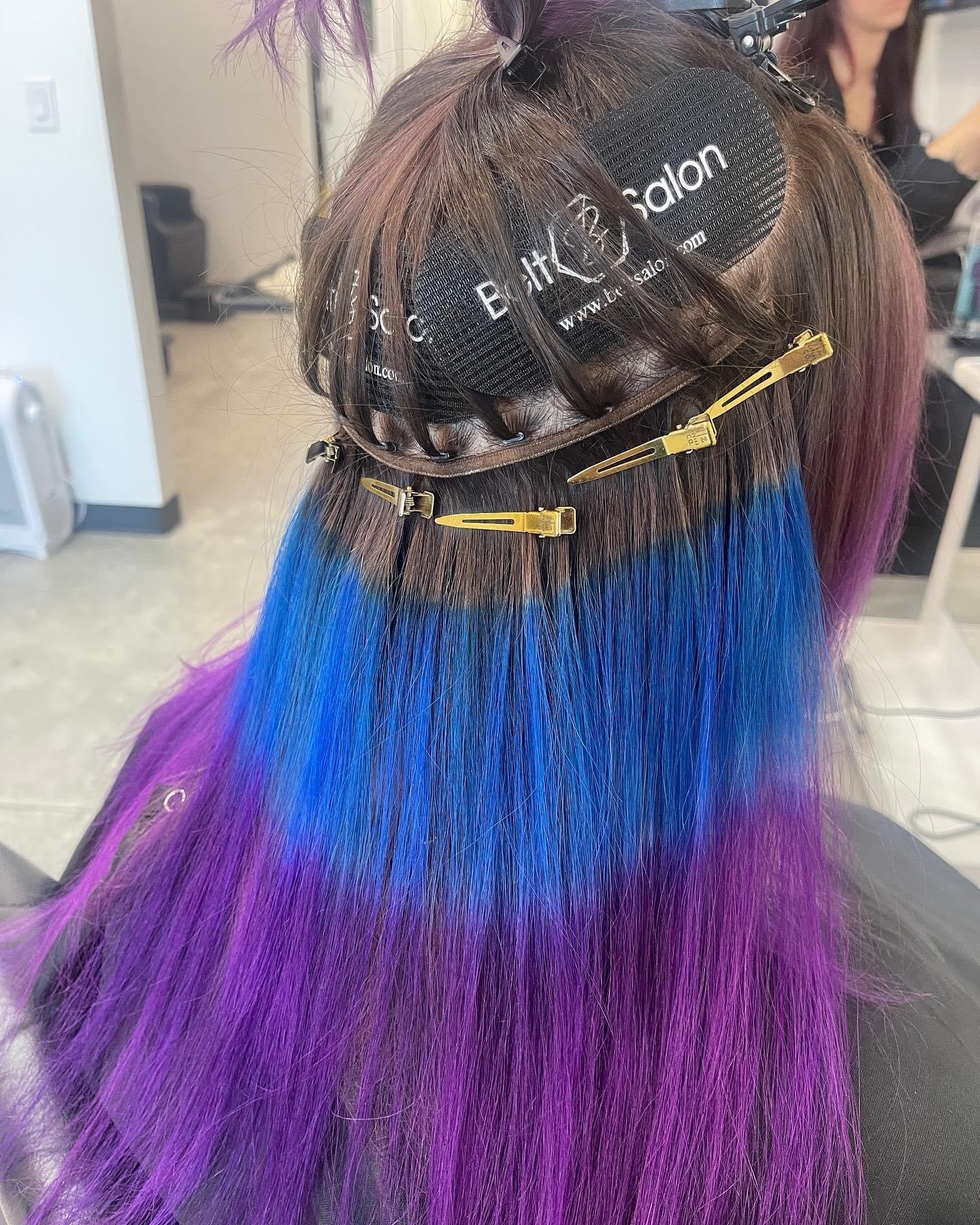How to Build Your Hair Extension Portfolio: A Guide for Belt Hair Extensions Stylists
Are you a hairstylist looking to make a name for yourself in the hair extension industry? If so, creating a captivating hair extension portfolio is a game-changer that can help you stand out from the competition, attract your ideal clientele, and grow your business. In this comprehensive guide, we'll reveal the secrets to building an impressive hair extension portfolio that showcases your unique skills, expertise, and versatility – with a special focus on incorporating popular techniques like hand tied hair extensions. Get ready to transform your career and become a sought-after hair extension stylist!
Why a Hair Extension Portfolio is Essential
A well-curated hair extension portfolio is a valuable marketing tool for any Belt Hair Extensions stylist. It serves several important purposes:
-
Showcasing your skills and expertise: A portfolio allows you to demonstrate your mastery of various hair extension techniques, such as hand tied hair extensions, micro-rings, and tape-ins.
-
Highlighting your versatility: Including a variety of styles, lengths, colors, and textures in your portfolio shows potential clients that you're capable of meeting their unique needs and preferences.
-
Building credibility and trust: A professional and diverse portfolio helps to establish your credibility as a skilled hair extension stylist, making clients feel more confident in choosing your services.
-
Attracting new clients: Sharing your portfolio on your website, social media channels, and online directories can help attract new clients looking for a talented hair extension stylist.
Now that we've established the importance of a hair extension portfolio, let's explore how to build one that showcases your unique skills and expertise.
Step 1: Identify Your Target Audience
Before you start building your portfolio, it's important to identify your target audience. This will help you tailor your portfolio to appeal to the specific needs and preferences of your ideal clients. Consider the following factors when identifying your target audience:
-
Demographics: What age range, gender, and income level are your ideal clients? Are they professionals, stay-at-home moms, or college students?
-
Hair types and textures: What types of hair do your ideal clients have? Do they have fine, medium, or coarse hair? Are they seeking extensions for straight, wavy, or curly hair?
-
Extension preferences: What hair extension techniques do your ideal clients prefer? Are they looking for temporary solutions, such as clip-ins, or more permanent options, like hand tied hair extensions?
-
Style preferences: What types of hairstyles are your ideal clients interested in? Are they looking for extensions to add length, volume, or both? Do they prefer natural or bold, colorful looks?
By identifying your target audience, you can create a portfolio that resonates with your ideal clients and showcases the skills and expertise they're seeking in a hair extension stylist.
Step 2: Showcase a Variety of Hair Extension Techniques
To demonstrate your versatility as a Belt Hair Extensions stylist, it's essential to include a variety of hair extension techniques in your portfolio. Some popular techniques to consider showcasing include:
-
Hand tied hair extensions: Hand tied hair extensions involve sewing small wefts of hair onto a client's braided hair. This technique offers a natural look and is ideal for clients seeking a comfortable and lightweight option.
-
Tape-in extensions: Tape-in extensions are a popular choice for clients seeking a semi-permanent solution. By using pre-taped, thin wefts of hair, this technique offers a seamless blend and can be easily applied in a short amount of time.
-
Micro-ring extensions: Ideal for clients looking for a more natural and undetectable extension option, micro-ring extensions use small, silicone-lined rings to secure hair extensions without the need for glue or heat.
-
Clip-in extensions: Clip-in extensions are perfect for clients seeking a temporary and easily adjustable solution. These extensions can be applied and removed at home and offer instant length and volume.
-
-
Pre-bonded (fusion) extensions: Pre-bonded extensions use a heat-activated adhesive to attach individual strands of extensions to the client's hair. This technique is versatile, allowing for precise placement and a customized look.
-
Nano-ring extensions: Similar to micro-ring extensions, nano-ring extensions use even smaller rings for a virtually invisible attachment. This technique is perfect for clients with finer hair types.
-
Sew-in (weft) extensions: A popular choice for clients with thicker or coarser hair types, sew-in extensions involve braiding the natural hair and sewing wefts of extensions onto the braids. This technique is gentle on the hair and provides a longer-lasting result.
By showcasing a variety of hair extension techniques in your portfolio, you'll demonstrate your versatility and expertise, attracting a diverse clientele with different hair types and extension preferences.
Step 3: Include Before and After Photos
Including before and after photos in your hair extension portfolio allows potential clients to see the transformative power of your services. When taking before and after photos, follow these tips for the best results:
-
Use consistent lighting and backgrounds: This will help potential clients focus on the hair transformations rather than any differences in lighting or backgrounds.
-
Take photos from multiple angles: Capturing your work from multiple angles helps to showcase the full scope of your skills and provides a more comprehensive view of the hair extension transformation.
-
Showcase color matching: Include photos that demonstrate your ability to color match hair extensions to the client's natural hair for a seamless and natural look.
-
Highlight various hair types and textures: Be sure to include photos of clients with different hair types and textures to show your ability to work with a diverse range of clients.
Step 4: Add Descriptions and Testimonials
Adding descriptions and testimonials to your portfolio can provide valuable context and help to build credibility and trust with potential clients. Consider the following tips when adding descriptions and testimonials:
-
Include technique and product details: In your descriptions, mention the specific hair extension techniques and products used, such as hand tied hair extensions or tape-ins, to help potential clients understand the process and results.
-
Highlight your skills and expertise: Use your descriptions to showcase your skills and expertise, explaining how you addressed the client's unique needs and preferences.
-
Incorporate client testimonials: Ask satisfied clients to provide testimonials about their experience working with you and the results they achieved. Include these testimonials alongside the corresponding photos in your portfolio.
Step 5: Share Your Portfolio on Multiple Platforms
To maximize the visibility of your hair extension portfolio, share it on multiple platforms, including:
-
Your website: Create a dedicated portfolio page on your Belt Hair Extensions website, showcasing your work and making it easy for potential clients to view your skills and expertise.
-
Social media channels: Share your portfolio on social media platforms like Instagram, Facebook, and Pinterest, using relevant hashtags to reach a wider audience.
-
Online directories and review sites: Add your portfolio to online directories and review sites, such as Yelp and Google My Business, to help potential clients find your services and view your work.
Building a diverse and impressive hair extension portfolio is essential for showcasing your skills, attracting new clients, and growing your Belt Hair Extensions business. By following the steps outlined in this guide, you'll be well on your way to creating a portfolio that demonstrates your expertise and versatility as a hair extension stylist. Stay up-to-date with the latest trends and techniques in the hair extension industry to ensure you're continually evolving and improving your portfolio, setting yourself apart from the competition and achieving success in your career.
-









Leave a comment